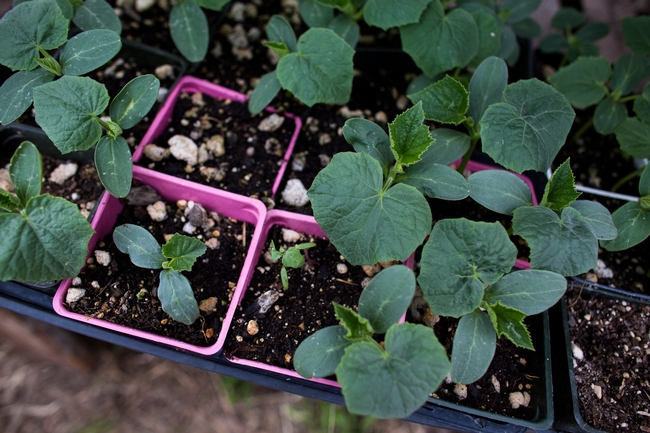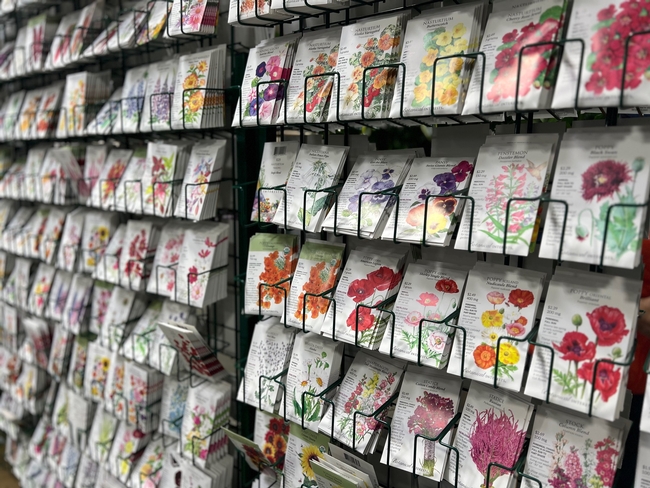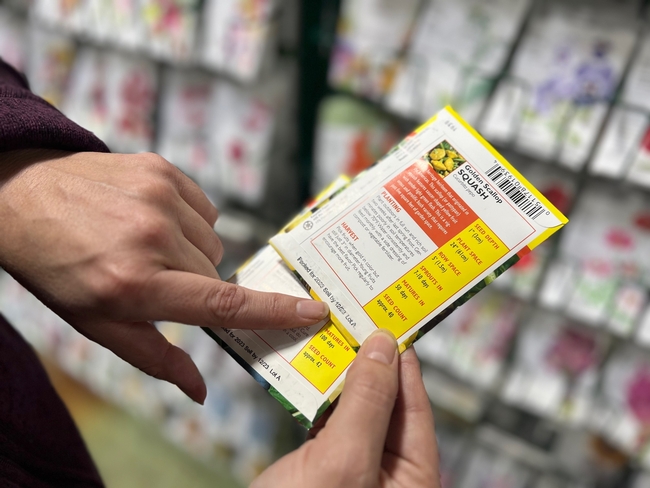February is a great time to start preparing for your spring and summer vegetable garden, especially if you want to get a head start on the growing season. According to the California Master Gardener Handbook, growing your own transplants from seed indoors can extend your garden season by several weeks, reduce your gardening cost and allow you to grow a more diverse variety of crops.
Growing from seed is not only fun, but it can also save you money. When stored properly a typical seed packet can last several years. Seeds should be started indoors or in an outdoor hot box or cold frame. Start growing the seeds 6-8 weeks before the date you would like to transplant them and when the threat of frost has passed.
Another benefit of growing vegetables from seed is the wide selection of varieties available from seed catalogs. Growing different varieties is important for an extended harvest and to find plants that grow well in your area. Vegetable plants sold in seedling form are generally available in only one or a few varieties. Plants typically started by seeds indoors include broccoli, cauliflower, eggplant, parsley, tomatoes and peppers. Seeds typically started in the ground include beans, beets, carrots, peas and turnips.
What do you need to get started?
- Soil mix - The soil media you choose should be fine textured, uniform and airy. Do not use garden soil. It is usually too heavy and often may have disease-causing organisms. A commercial potting mix suited to starting seeds will work well. Fill your growing containers about 2/3 full.
- Containers - You can start seeds in almost any container that has drainage holes. Sterilize recycled containers in a 1:9 bleach to water solution, rinse them well and let them air dry prior to use.
- A location with proper light and temperature - A sunny window is usually the perfect spot as it has strong but indirect sunlight. Seed packages should instruct you on sunlight needs. Additionally, keep your seedlings in an area that stays between 65 and 70 degrees during the day and 55-60 degrees at night.
- Quality Seeds – Only plant seeds from a reputable source. Check your seed packets to ensure your seeds have not expired, and that you are planting them at the right time of year. You can also check for seed viability.
- Water – It is crucial to provide seeds with consistent watering. Seeds and seedlings must be kept evenly moist to thrive.
Steps to starting your vegetable garden indoors
- It is important to follow the instructions on your seed packet. Refer to the seed packet for the proper planting depth, plant spacing, and days to maturity.
- Once you have planted your seeds, water them and continue to do so consistently. The goal is to keep the soil evenly moist but not overly wet.
- Two weeks before transplanting, or when your plants are two to four inches tall, expose them to outdoor temperatures to acclimate them. Do this by leaving them outside in a shady spot during the day for a week, and bringing them inside at night. The following week, leave them outside in their containers during the day and at night, gradually exposing them to more sunlight. This process is referred to as hardening off.
- Transplant your vegetables into the garden, planting them at their original depth. Tomatoes can be an exception to this rule however, so consider this tutorial before planting tomato seedlings. Be sure to handle seedlings with care.
Ask your local UC Master Gardener Program
Have a seed starting or home vegetable gardening question? UC Master Gardener volunteers are available to help. Click here to Find a Program and connect with your local UC Master Gardener Program. You will be redirected to your local county website and contact information. UC Master Gardener volunteers are available to help answer questions for FREE. Happy gardening!


